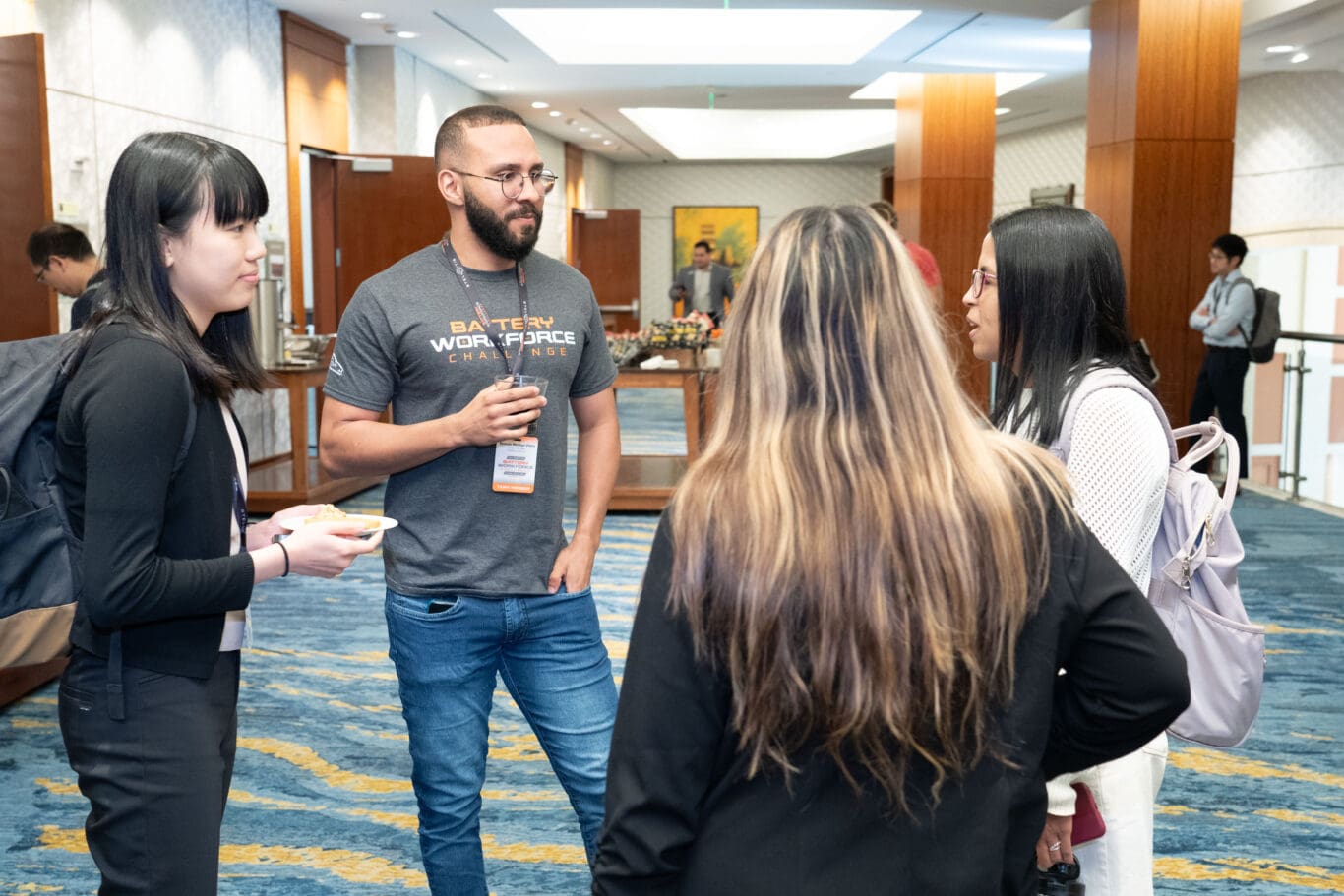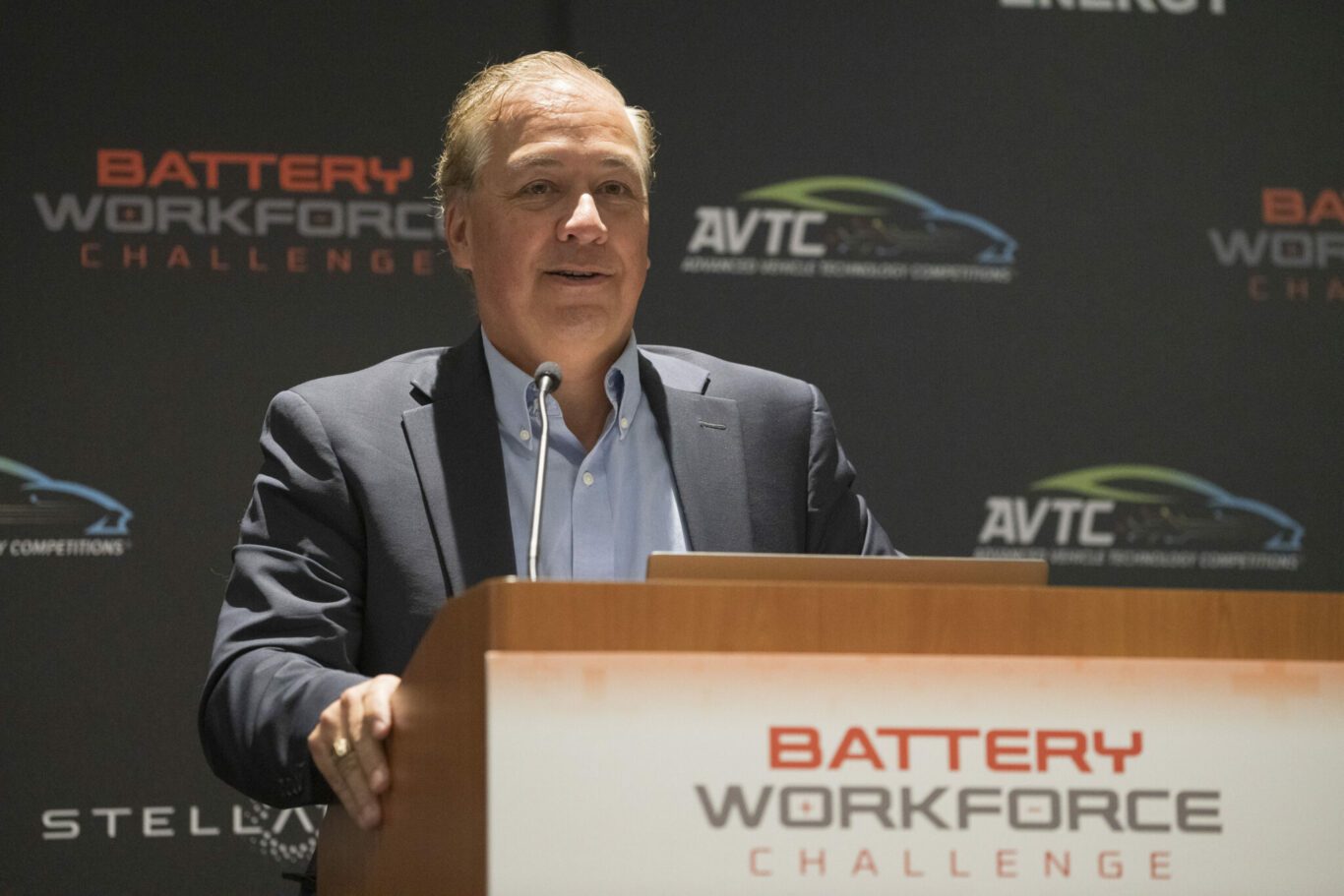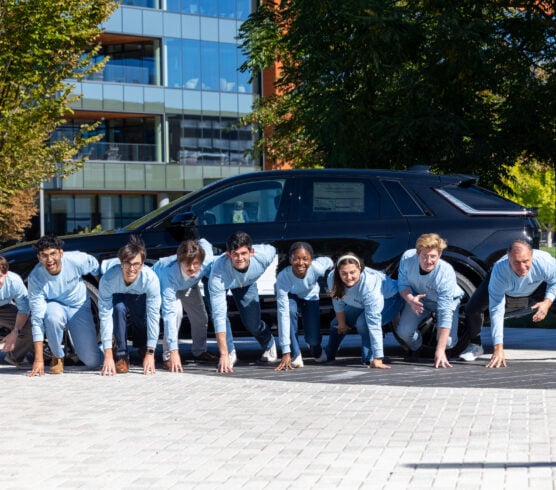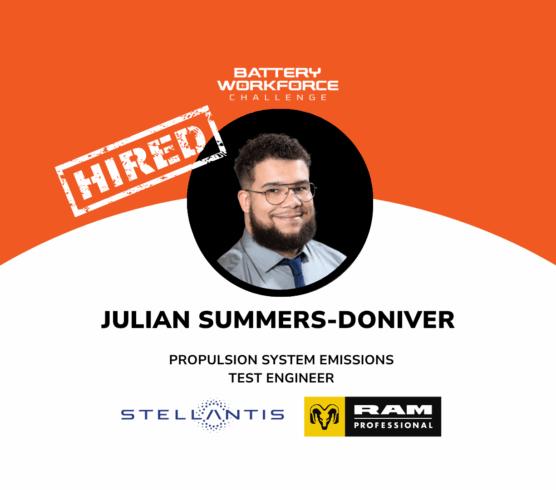By Em Jankauski
ALEXANDRIA, Va. — Inspiration is what’s powering the next generation of transportation engineers. And inspiration is also what’s driving the Battery Workforce Challenge collegiate competition’s team members to success after the 2023 fall workshop held in Alexandria, Va. from Oct. 12-14.
The Battery Workforce Challenge collegiate competition tasks 12 universities, along with their vocational school partners, to design, build, test and integrate an advanced EV battery into a future Stellantis vehicle, which will be announced in March 2024.

The three-year competition’s headline sponsors include the U.S. Department of Energy, Argonne National Laboratory and Stellantis North America. The competition wraps up in 2026 with the winning teams receiving annual engineering and sponsor-related category awards, $100,000 in industry-provided prize money, and invaluable employment, collaboration and networking opportunities with industry leaders.
At the fall workshop, students gained invaluable industry insights from plenary keynote speakers like U.S. DOE’s deputy assistant secretary for Sustainable Transportation & Fuels Michael Berube and Vehicle Technologies Office director Austin Brown, Stellantis’ senior vice president and head of Global Propulsion Systems Micky Bly, and Argonne National Laboratory’s Advanced Vehicle Competition Program manager Kristen Wahl.

“Right now they’re absorbing all the information that was provided,” said David Robertson, Battery Workforce Competition principal battery engineer and organizer. “The amount of content that they were delivered would normally be provided more like in a semester time frame, and this was provided in three days.”

Student sessions included electrochemistry and cell design, battery disconnect unit function and components, high voltage systems, vehicle and battery Controller Area Network interface, battery sizing and design, battery research and development, algorithms and simulations, introduction to software development, thermal system computer-aided engineering and much more.
Additionally, students got to network with a handful of the competition’s sponsors including Argonne National Laboratory, Stellantis, Our Next Energy and MathWorks.

“Students don’t usually get these kind of opportunities to travel and network with actual large companies like Stellantis,” Robertson said. “This really did provide them a unique experience.”
“Some of them were coming up to me and saying, ‘This is amazing! We never get to do anything like this,’” he added. “So I think they recognize that the amount of information that was provided to them, the resources that they are getting are not something that many schools can provide.”
Robertson sees invaluable opportunities like these leaving a lasting impact, inspiring the students long after the competition is complete.
“Adding the Battery Workforce Challenge to your resume, and potentially these internships that are being offered across our sponsors, can definitely boost that resume to stand out by the time they graduate,” Robertson said. “That really does speak to real-life experience and to real problem solving that you don’t really get that much of in a classroom setting.”
And in return for sponsors? They’re also receiving inspirational dividends.
“The Battery Workforce Challenge is one way that Stellantis is taking a leading role to help develop the workforce of electrification engineers of the future,” said Rebecca Novak, Stellantis’ battery program lead. “At Stellantis, we recognize the pivotal role that battery technology plays in electrifying the automotive industry, and we look forward to the next three years to see what these talented collegiate teams can produce.”
Teams will reconvene for the next phase of the competition at the 2024 winter workshop in Detroit, Mich. from March 7-9. Here they will provide Technical Design Review and Mid-Year Team Status presentations, and the competition vehicle will be unveiled.




